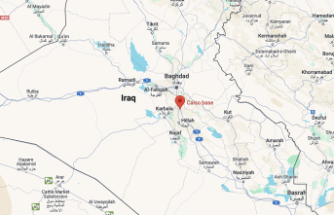One of the agricultural pesticides most commonly used on crops around the world, banned last year in France for being harmful to the bees, may also have relation with the overall decline in the populations of wild birds, according to a new study.
The research, published recently in the journal Science, is the first on the possible effects on birds of the pesticides that contain neonicotinoids.
Those chemicals used in insecticides act on the central nervous system of insects and, only in France, it is estimated that it killed as many as 300,000 colonies of honey bees each year until its prohibition by law in 2018.
A team of researchers led by Margaret Eng , canadian University of Saskatchewan (USask), it is suggested to find out if these substances were damaging also to the birds, since 40% of the world's bird species are in decline in population, according to a report last year by BirdLife International.
The scientists supplied to sparrows white crown small doses of an insecticide neonicotinoide called imidacloprid, and observed how these birds to lose weight and delaying their migration , a few effects that detract their options of survival and reproduction.
"we Saw these effects using doses that are within the range of what a bird can eat in a wild environment in a realistic way, something equivalent to eating only a few seeds processed," said Eng of the Centre of Toxicology at USask.
"Our study shows that this goes beyond the bees: the birds can also be harmed by pesticides neonicotinoids modern , and that should worry us all", added the biologist Bridget Stutchbury, from York University (Toronto, Canada).
The scientists were exposed to the sparrows to the insecticide during a stopover on the migration route of the birds in Ontario (Canada), measuring your body mass before and after the experiment, and adhiriéndoles a few light transmitters radio in order to follow their movements.
The birds that received the highest dose of the pesticide lost up to 6% of their body mass in just six hours and it took an average of 3.5 days longer in resuming their migratory route, compared with birds that were not exposed to the insecticide.
"These results seem to be associated to the effect of appetite suppression that produces the imidacloprid. The birds subjected to such doses ate less, and is likely to delay your flight because they needed more time to recover", explained Eng.
The report released last year by BirdLife already pointed to the use of neurotoxic insecticides or neonicotinoids as responsible for the loss of body mass of the birds, and attributed part of its demographic decline to the agricultural intensification .
Date Of Update: 18 September 2019, 10:01











